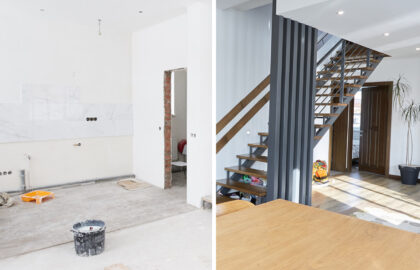
 It is easy and safe to just paint the various rooms in your home. Many people don’t like to venture out beyond these basic interior design decorating techniques, because they don’t feel that they have the skills or expertise to do so. They are afraid of making a mistake and making their home look unattractive.
It is easy and safe to just paint the various rooms in your home. Many people don’t like to venture out beyond these basic interior design decorating techniques, because they don’t feel that they have the skills or expertise to do so. They are afraid of making a mistake and making their home look unattractive.
With all of the wonderful products on the market today for interior decorating there is no reason why anybody cannot be adventuresome and transform their home into an object of beauty. Once you have done one room with texture you will no doubt want to expand this into every room of the house.
Successful interior design is dependent of the colors, shapes, patterns and lines of the area being visually appealing. Texture can be added into this in a variety of different forms. Aside from textured walls it can be brought into the design through pillows, cushions and even the materials in the furniture.
When considering texture it has to be categorized as either visual or tactile. If it is visual then it appeals to your visual sense. If it tactile then it affects your sense of touch. You can combine both in a room for some spectacular results.
In addition to this you need to consider the type of ambience the texture is going to create. If the texture is considered smooth and glossy then this fits into the category of being a modern touch. If it has a rough natural base to it then it is counted as being rustic.
One of the challenges that come with using texture is to get it to balance with the area where it is going to be used. There are tons of places where texture can be incorporated. It can be in the floor, the walls or ceiling. It can be found in the accessories of the room as well as other places. It can be used more than once in variations within the area.
Start by planning your space before jumping right in with the texture elements. It is easier to add texture than take it away in some cases.
You want to consider color as well as texture so you have to give some careful thought as to the area and what is going to work best. The texture you use is going to have an effect on how the room feels in respect to creating a warm or cool look. You can play with both visual and tactile textures to see which is the most appealing to you. Once you have the basics done then you can add to it as needed. Before long you will have no difficulties on using texture to spruce up the appeal and atmosphere of the space you are working on.







